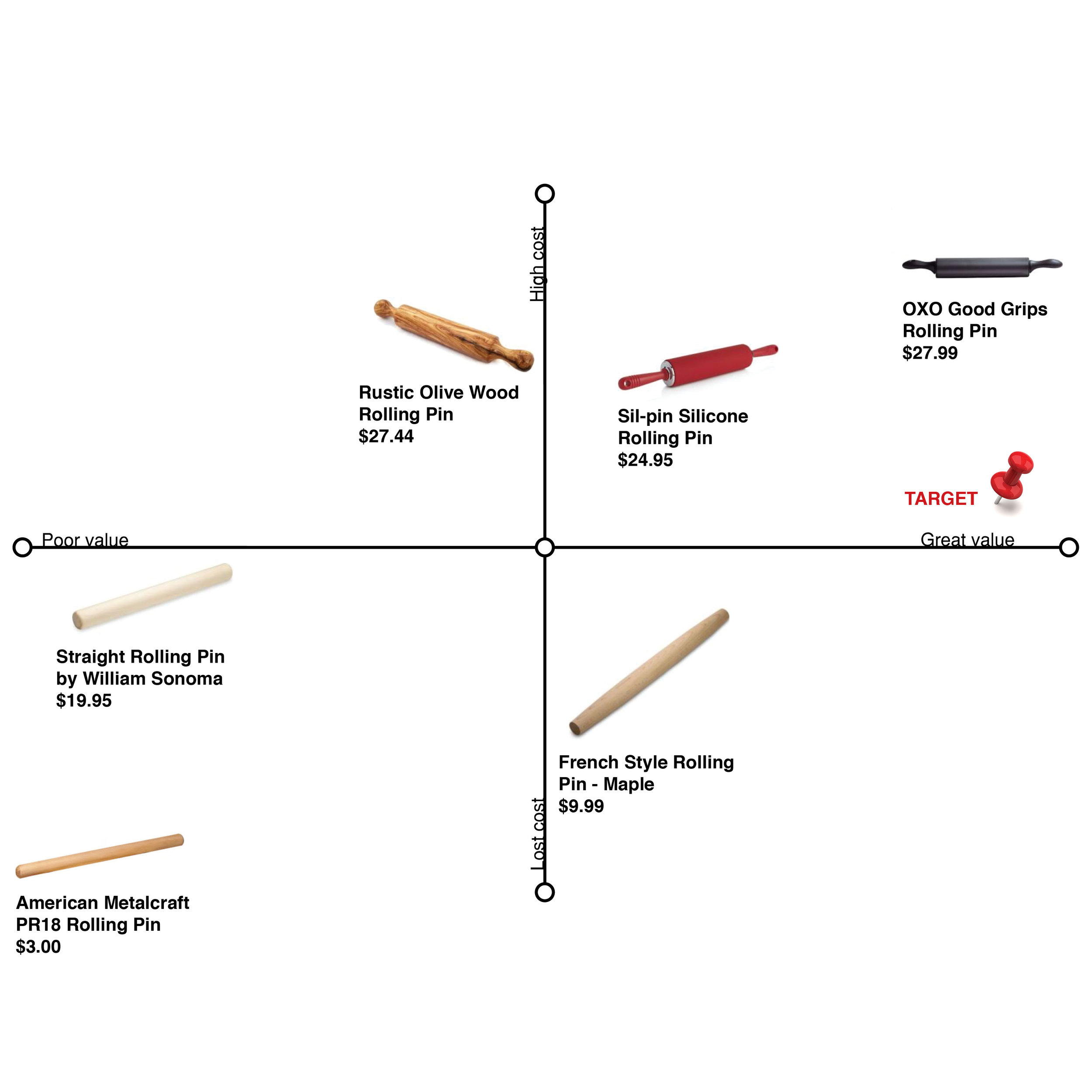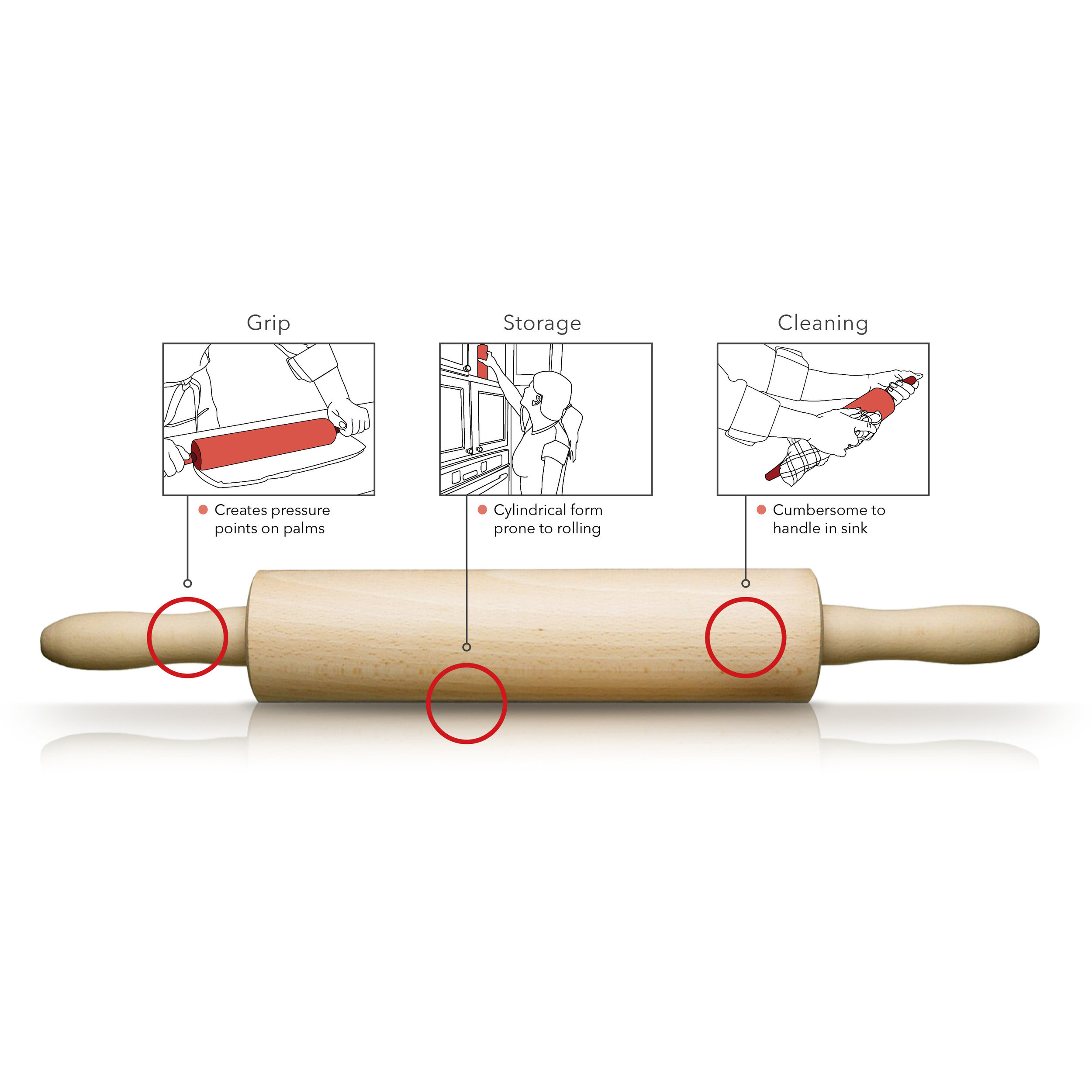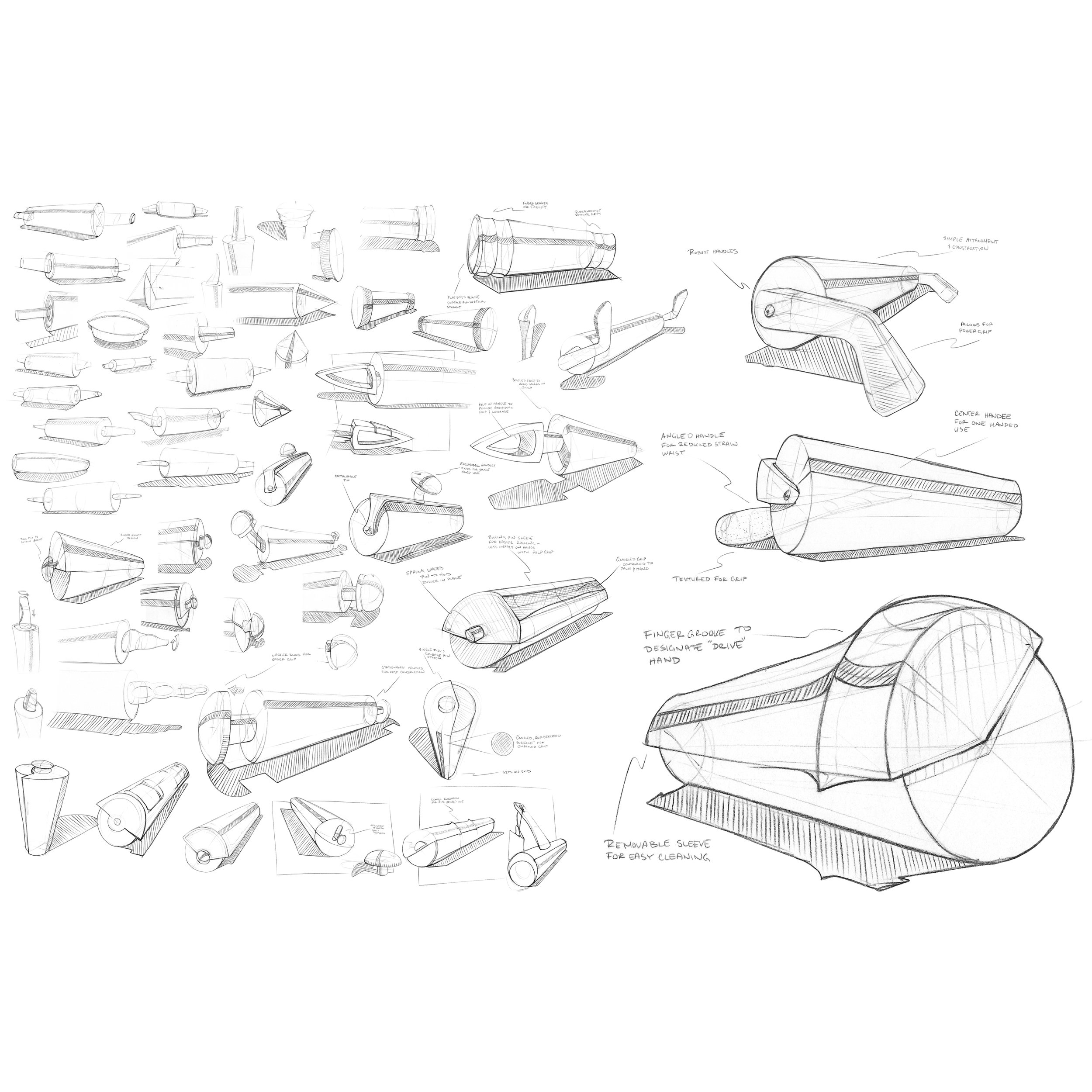
Pin - A New Way to Roll
A reinvention of the rolling pin - a product that has seen little improvement since its inception

Benchmark
I kicked off the project with a competitive bench market to outline where in the marketplace I wanted to land.

Task Analysis
I identified four basic operations associated with using a rolling pin: retrieve, prepare, roll, and clean.

Design Challenges
Grip: Pins (both french and traditional) typically apply undo pressure on the palms
Storage: Cylindrical forms are prone to rolling away and thus pose a issue when storing. Some pins even come with a dock of sorts to mitigate this problem
Cleaning: Due to their size, many pins are cumbersome to handle in the sink

Ideation
I jumped into ideation with my design goals solidified:
1. More accessible grip
2. More convenient to store
3. Easier to clean

Modeling
A low fidelity model was more than enough to serve the purposes of the project. My goal was to validate among a group of individuals the ergonomics of the design. Based on this preliminary model, increased comfort was unanimously expressed by all participants.

The Product
The final design boasts a non-stick pin clicked into a semicircular housing that runs the full length of the item. The housing’s large surface area and static nature relieve undo pressure and irritation on the hands of the user. Lastly, the finger ridge allows for both righties and lefties to increase both their comfort and control of the pin.
